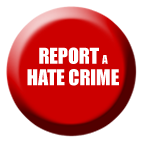89.3 KPCC, November 21, 2016
Fall would typically be a slow period in the Anti-Defamation League’s education department. The group usually holds about 20 anti-bias programs at schools during the autumn months.
Not this year.
“We’ve seen a 50 percent increase this fall,” said Dave Reynolds, the education director of the League’s Pacific Southwest Regional Office. “Some began because schools reached out to us before the election to say, ‘Listen, the elections has brought a level of rhetoric into my classroom that I need help for my teachers or for my students.’”
He said traditional public schools, charter schools, private and parochial schools have called. The calls are confidential, but he said the incidents the schools report are troubling.
“Everything from swastikas being painted or drawn or carved into trees to Muslim students having hijabs ripped off, to Latino students being targeted with comments like, ‘now that Donald Trump has been elected president you’re all going to be kicked out and have to go home,’” Reynolds said.
Schools pay the ADL to run half-day or longer programs that train teachers on how to recognize bias and address it in themselves and their students. One of the program’s goals for students is to empower them to help stop speech and actions that could lead to bullying.
Last year, the group reached 3,100 students through these programs, Reynolds said.
As reports of bias and hate have increased in schools after Donald Trump’s election, school leaders have had to decide how to address the incidents, whether to keep lessons focused on the students involved in a particular incident or to send an anti-bias message to the larger student body. Many schools are increasingly seeking outside help.
“We want future leaders in our communities to be educated and to be tolerant and to be willing to have discussions with each other, as opposed to just stereotyping and creating these problems,” said Orange Unified Superintendent Mike Christiensen.
His school district hired O.C. Human Relations about six years ago, he said, after he heard anti-gay and transgender talk among students on some campuses. About sixty high school students and a dozen teachers and administrators, he said, go through the group’s Walk in My Shoes program each year.
“They have talks based on people who actually come forward who have experienced bullying. They’ll have people from the gay rights community, they will have Muslims come and talk, Jewish people come and talk,” Christiensen said. “It’s a very wide cross section of Orange County,”
O.C. Human Relations said it reached 20,000 students last year through its various anti-bias and bullying programs.
Not all school districts seek outside help.
Some school districts provide no anti-bias training to students, or have their own teachers provide similar instruction to what the outside groups provide.
L.A. Unified has its own in-house office that provides anti-bias training.
Educators said it’s necessary, even at the earliest grades.
“We just did a program for early childhood educators across L.A. County,” said Reynolds of the Anti Defamation League.
At the program, he said, educators talked about how 3- and 4-year-old children talked about and used building blocks to build walls, imitating the language they’ve heard but without understanding the implications.
To read the article on KPCC’s website, click here.

